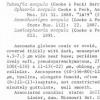
29-12-2025 08:30
Hello.A tiny ascomycete sprouting under Juniperus

28-12-2025 12:08
Margot en Geert VullingsThis possible Karstenia was found on the bark of d

21-12-2025 21:32
Pol DebaenstHello, Garden, Burgweg 19, Veurne, BelgiumOn 10/1

26-12-2025 21:19
Arnold BüschlenPithyella chalaudii Priou. Ist als Bryoparasit in

21-12-2025 09:32
Hello.A tiny ascomycete found embedded in wood in

18-12-2025 21:17
Pol DebaenstThe identification took me to Byssonectria deformi

24-12-2025 17:08
Hulda Caroline HolteHello, I have found this propoloid ascomycete on
 Dear Friends
Dear FriendsToday, during the review of other specimens from the Carpathians, I found Acanthostigma sp. sample (unfortunately, slightly immature). I think it can be Acanthostigma scopulum Peck.
I am never seen this species earlier, therefore I can not be sure.
Do you familiar with this species?
Grateful before,
Alex
I don't think this is Acanthostigma. To me, your find resembles more to a Tubeufia.
Best wishes,
Gernot

Thank you.
I contacted about this species with Andrew Miller. Till now we have not come for a unique solution of this question. Our first thought was that it is Tubeufia aurantiella, but the degree of development of setaes favors Acanthostigma.
Alex

In various sources information about Acanthostigma (=Tubeufia) scopulum: the size and presence of septa in setaes, as well as pseudothecia colour, size of asci and ascospores for this species are different.
In Kodsueb, R. et al, Mycologia, 2004, 96(3): 667
Acanthostigma scopulum (Cooke & Peck) Peck, Bull. New York State Mus. 1:22 (1887) (figs. 1-6)
Ascomata 145-250 µm diam, superficial, globose, solitary or gregarious, dark brown to black, membranous, ostiolate, with setae; setae (56-)80-90(-99) µm long, 4-6 µm wide at base, 1.5-2 µm wide at apex, dark brown, 1-2-septate, thick-walled, straight. Asci (64-)90-120(-130) x 8-10 µm (av. = 103 x 9.2 µm, n = 20), 8-spored, cylindric-clavate, bitunicate, short stalked, pseudoparaphyses. Ascospores (66-)70-85(-90) x 3-3.5(-4) µm (av. = 78 x 3.4 µm, n = 30), fasciculate, long-fusiform to cylindrical-fusiform, hyaline, straight or slightly curved, (5-)9-12-septate, smooth-walled, guttulate, lacking appendages and sheaths.
Substratum. - Wood submerged in streams, decaying wood (Fagus sylvatica, Pinus sp. and Tsuga sp.)
Known distribution. - Australia, Europe, Hong Kong and U.S.A.
In Barr apical setaes are non septate.

I have some news!
Now I receive the letter about my sample from Kevin Hyde (one of the world experts in Acanthostigma).
He wrote:
Dear Alex
Yes I think so (Acanthostigma scopulum) although these taxa (Acanthostigma scopulum and Tubeufia aurantiella) do not split into Tubeufia and Acanthostigma when we do molecular work.
If you want to send me some dried material I will try to isolate it and sequence it
Best wishes
Kevin
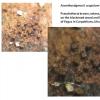
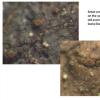
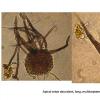
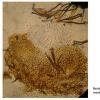
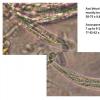
 Acanthostigma-Promputtha-Miller-Mycologia-2010-0001.pdf
Acanthostigma-Promputtha-Miller-Mycologia-2010-0001.pdf